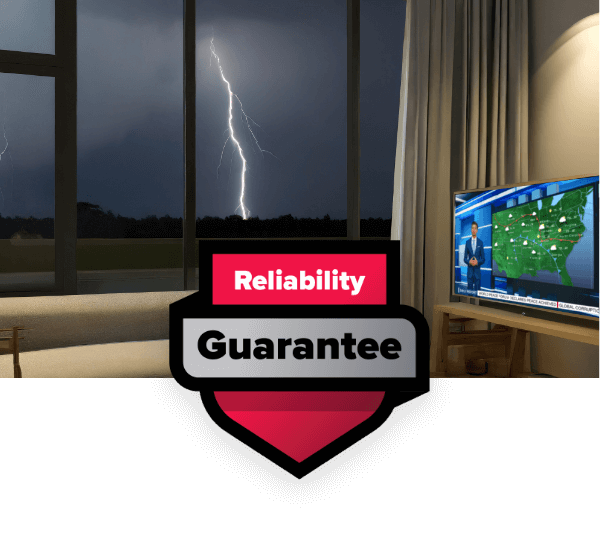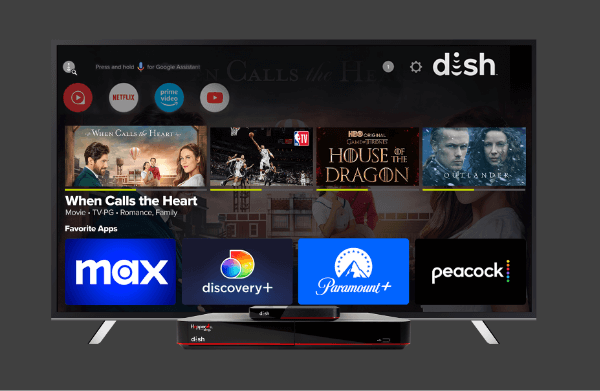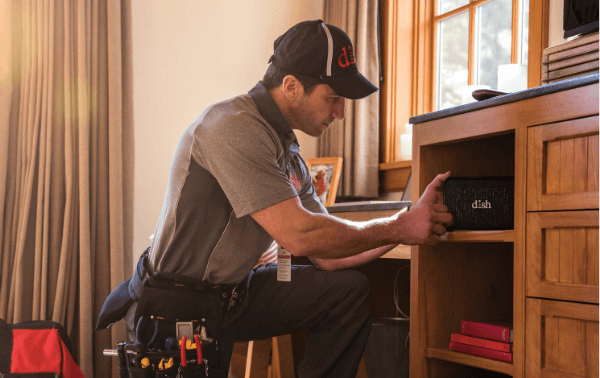Revolutionize Your VR Experience With Fiber Internet
Table of Contents
Ever put on a VR headset and felt like you were stepping into the future, only to be yanked back to reality by blurry graphics, stuttering movement, and a wave of nausea? That’s not the headset failing—you’re just having an issue with your internet connection.
Imagine standing courtside at the NBA Finals, feeling the crowd’s energy as you look in any direction. Or picture yourself walking through your dream home from 3,000 miles away, opening doors and peering out windows as if you were really there. Now imagine all of that coming to a screeching halt because your internet can’t keep up.
Virtual reality isn’t just the next cool tech toy—it’s a portal to experiences we’ve only dreamed about. But here’s the secret that most VR enthusiasts discover too late: that mind-blowing, stomach-dropping, jaw-dropping VR experience you’ve been promised? It’s only possible with serious internet power behind it.
That’s where fiber internet enters the story. While your current connection might be struggling to stream a movie, fiber internet delivers the astronomical speeds and pin-drop precision that virtual worlds demand.
Let’s dive into why your journey into virtual reality is only as good as the internet highway you’re traveling on—and why fiber might be the difference between a transformative experience and a disappointing gimmick.

Low latency matters
Why Regular Internet Falls Short for VR Experiences
Virtual reality works fundamentally differently from regular video streaming. When watching a standard video, you see the entire frame at once. With VR, you’re only viewing a small section (about 1/12th) of a 360° panorama at any moment as you look around.
This difference creates unique challenges for streaming VR content.
VR Requires Massive Resolution
Traditional video resolution is straightforward—1080p HD contains about 2 million pixels, while 4K video has approximately 8.3 million pixels. But in VR, when you’re only seeing a fraction of the full panorama at once, the resolution of your actual field of view can be disappointingly low. For example, in a 4K VR video, your field of view might be only around 1000 pixels wide by 667 pixels tall—hardly better than standard-definition TV.
To achieve truly high-resolution VR, you need to stream video at an incredibly high resolution. For HD-quality field of view in VR, we’re talking about streaming 12K video, which contains nine times more image data than 4K video.
Motion Sickness Is a Real Problem
Low-quality VR with high latency doesn’t just look bad—it can literally make you sick. For reliable and comfortable VR experiences, content must be streamed at a high frame rate with minimal delay between head movements and video adjustments.
The U.S. Army discovered this phenomenon decades ago when studying VR simulators. They found that low-quality video in VR could trigger “simulator sickness"—a condition that occurs when our eyes perceive movement that our body can’t feel, creating “cue conflict." When VR content lags or skips frames, this disconnect between visual input and physical sensation can cause nausea and discomfort.
The Minimum Internet Speed Requirements for VR
So, just how fast does your internet need to be for decent VR experiences?
For 4K regular video, the FCC recommends a minimum download speed of 100 Mbps. That’s already challenging for many home internet connections, and it’s only enough for standard-definition equivalent VR. At this speed, you can watch some basic VR videos on YouTube or play simple VR games, but you’ll miss out on the truly transformative VR experiences.
For HD-equivalent VR streaming, you need to handle 12K footage, which contains about nine times more data than 4K video. Following the FCC guidelines, this suggests you need a minimum connection speed of around 225 Mbps, and likely more to be safe. This speed would enable experiences like watching sports events with 360° views or having immersive video calls.
For truly immersive VR with 4 K-equivalent resolution, the demands go even higher. We’re talking about connection speeds exceeding one gigabit, faster than most currently available home internet connections.

Your speedy solution
Why Fiber Optic Internet Is the Perfect Match for VR
Fiber internet stands out as the ideal solution for VR enthusiasts for several key reasons:
Blazing-Fast Speeds
Fiber-optic internet delivers ultra-fast speeds of up to 10 Gbps or higher, making it perfect for bandwidth-intensive activities like virtual reality (VR). These speeds ensure that game data and video content are transmitted to and from servers without delay, minimizing lag and creating a more immersive experience.
The high speeds of fiber also dramatically reduce download times for VR content, which often comes in massive file sizes. What might take hours to download on conventional connections can be completed in minutes with fiber internet.
Extremely Low Latency
Latency—the delay between your actions and the server’s response—is critical for VR experiences. High latency results in lag that causes delayed actions and poor responsiveness. Fiber internet provides exceptionally low latency, which is essential for fast-paced VR applications.
Low latency allows for more precise movements and reactions in VR environments, making everything from virtual sports to social interactions feel more natural and responsive. For competitive VR gaming, this can be the difference between winning and losing.
Symmetrical Upload and Download Speeds
Unlike DSL or cable internet, which typically offer faster downloads but slower uploads, fiber internet provides symmetrical speeds, meaning your upload speeds match your download speeds. This is particularly important for interactive VR experiences and for creators who want to share VR content.
Cable and DSL services typically provide asymmetric speeds, with much faster download capabilities than upload. Fiber connections, however, can offer symmetric speeds where a gigabit connection provides nearly the same upload and download bandwidth. This enables livestreaming of VR content—something that’s practically impossible with a conventional internet connection.
If you’re streaming your VR gameplay or hosting virtual meetings in VR, you’re constantly uploading video data while simultaneously downloading data from servers. With symmetrical speeds, fiber ensures both processes run smoothly without compromising performance, preventing lags, stuttering, or pixelation that would detract from the experience.
Exceptional Reliability
For all VR applications, your broadband speed will likely be the biggest performance bottleneck for the foreseeable future. A gigabit fiber optic connection is currently the best guarantee of high-quality VR experiences. Even better, the fiber infrastructure is easily upgradeable, ensuring you’ll be able to keep pace with new VR developments.
Fiber internet is also less susceptible to interference and signal degradation compared to traditional copper-based internet, providing more consistent performance, crucial for maintaining immersion in VR environments.
Real-World Applications of VR Powered by Fiber Internet
The combination of fiber internet and VR opens up exciting possibilities that go far beyond gaming:
Business Applications
VR has the potential to transform remote collaboration. Instead of typical video conferences where webcams provide a single window into a room, VR allows businesses to “invite viewers inside" the space. This creates unprecedented opportunities for remote teamwork and collaboration.
Entertainment and Sports
Imagine watching a baseball game live from the pitcher’s mound perspective or experiencing other entertainment in completely new ways. VR makes these experiences possible, but only with a robust internet infrastructure to support them.
Multiplayer VR games and experiences require high bandwidth to support multiple users connected to the same server. The more players involved, the more data needs to be transmitted between devices and servers. Fiber internet provides the bandwidth capacity to handle large multiplayer VR environments without compromising performance.
Healthcare Applications
Telehealth could be revolutionized through VR, with doctors able to show patients exactly what will happen during upcoming procedures. These advanced medical applications require the stability and speed that only fiber internet can provide.

Use multiple VR sets at once
How Fiber Internet Handles Multiple VR Users
Modern households often have multiple devices connected at the same time, from gaming consoles to smart TVs and smartphones. Traditional internet connections struggle to provide sufficient bandwidth when multiple demanding applications run concurrently.
Fiber-optic internet offers enough bandwidth to support multiple VR headsets and other devices without network congestion. This means someone can use VR while others in the household stream movies, make video calls, or browse the internet, all without slowdowns or interference.
Future-Proofing Your VR Experience with Fiber
As virtual reality technology continues to evolve, the demands for faster speeds, higher-quality graphics, and more immersive experiences will only increase. Fiber internet represents a future-proof solution that can meet these growing needs.
With fiber’s capacity to handle large amounts of data at high speeds, VR enthusiasts can confidently invest in next-generation headsets, applications, and cloud VR services, knowing their internet connection will support these technologies for years to come.
The VR market still has significant growth ahead before becoming mainstream, and one major barrier to wider adoption is insufficient internet connectivity. Even standard-definition VR requires high-speed broadband, making fiber internet infrastructure critical to VR’s future success.

Video is taking over
The Growing Importance of VR and Social Connection
Many of the most exciting VR possibilities—sitting courtside at basketball games, virtually visiting far-off locations safely, trying extreme sports regardless of physical limitations—rely on social connection and shared experiences. These applications need not just speed but also the reliability and consistency that fiber provides.
The market for virtual reality hardware and content is projected to grow explosively in the coming years. A major factor driving this growth is social video—the ability to share immersive experiences with others in real-time.
With greater bandwidth and more advanced platforms, our work and social lives are becoming increasingly dependent on video communication. This trend correlates strongly with the rise of remote work, especially among younger generations who rely heavily on collaborative video tools.
As major technology companies like Meta and Google continue to invest billions in VR technology, the integration of social experiences with virtual reality is accelerating. The question isn’t whether VR will become a primary communication medium, but whether your internet connection will be ready when it does.
Get a High-Speed Fiber Connection for Your Home
Ready to experience VR without the limitations of conventional internet? Check if Fidium Fiber is available in your area.
Simply enter your zip code here to discover if fiber serves your neighborhood. Don’t let your internet connection be the bottleneck that holds back your virtual reality experience—upgrade to fiber and unlock the full potential of VR technology.
Sources
[1] Solveforce.com. “How Fiber Internet Enhances the Gaming Experience."






 Call
Call 

 Access Your Account
Access Your Account